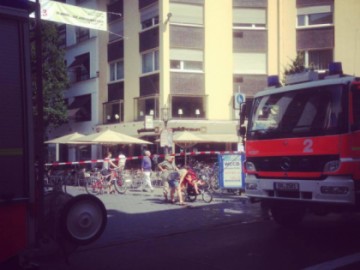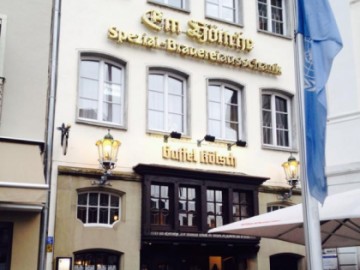St. Martin Basilica – a cocktail of architectural styles
Construction of the main catholic church of Bonn began in the 11th century on the place of death of great martyrs Cassius and Florentius. In the 13th century the basilica was depicted on the medieval coat of arms of the city, after which the church acquired the status of the city symbol, and continues to remain as such today. At the entrance to the cathedral you can find giant sculptures in the shape of two cut off heads in the memory of the city patrons. In the crypt you will find a sarcophagus with the relics of these saints.
Construction lasted for two centuries. During this time the architectural image of the church absorbed features of very different styles – from Roman to Gothic. Inside the cathedral don’t miss the bronze statue of St. Helena, mother of the Emperor Constantine, dating back to the 17th century, a carved altar and mosaic of the 19th century. The local organ was manufactured in 1961 and decorated with intricate fretwork.
The so-called Kreuzgang has also preserved well – it is a closed gallery leading to the courtyard of the cathedral. In the 12th century cloister you can observe ancient tombstones of clergymen and noble townsfolk of Bonn. Besides, here you will see a wonderful view from the cathedral’s main 81.5 m tall tower. It must be mentioned that Bonn’s basilica of St. Martin was the first in the catholic world to install a terminal for electronic donations.









































